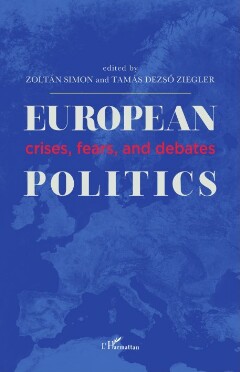Seite 23 [23]
Introduction: European politics nowadays ] 21
that already very high international inegualities keep on increasing at the
global level (Piketty 2013, 552-554). By the way, a strong polarisation also
exists and persists in regional disparities within the EU. For many European
citizens living in deprived areas, closing this gap remains wishful thinking
and an unkept promise that seems to never materialise.
Inegualities have always been a major destabilising factor in all societies
and political systems throughout history. Its conseguences cannot be
underestimated in contemporary wealthy European societies with a robust
middle-class. As Piketty warns: the impoverishment of the middle-class
would very likely trigger a violent political reaction (Piketty 2013, 556). One
reason for this is that the loss of relative economic position - typically in
the middle-class — usually translates into a feeling of loss of status, making
many individuals perceive economic distress as a personal identity crisis
(Fukuyama 2018, 89). While economic troubles are easier to solve through
sound policies, identity-related anxieties are much more difficult to deal with.
b. Dealignment and realignment
Since the 1970s, European societies have also undergone a “great
transformation” of their structures and value systems (Magone 2011, 76-136).
This is often captured through the emergence of post-modern knowledge¬
based, secularised, post-material, and individualised societies, with all of
these factors having a major political impact.
The rise of post-modern knowledge-based societies and the spreading of
secularism bring us back to Seymour Lipset’s and Stein Rokkan’s theory of social
cleavages. They identified four historic social cleavages that had structured
European politics: the class (owner/worker, employer/employee), the rural¬
urban (primary/secondary sectors in economy), the church-state (religious/
secular), and the center-periphery (dominant/dominated culture) cleavages,
forming the basis of party systems and structuring politics in general. Beyond
this, they also claimed that the party systems ofthe 1960s reflected, with few
but significant exceptions, the cleavage structures of the 1920s (Lipset and
Rokkan 1967, 44), commonly referred to as the ‘freezing hypothesis.
However, traditional social cleavages started waning and frozen party systems
started de-freezing in the early 1970s. Arguably, the most important change has
been the transition into service societies with an emerging tertiary (services)
sector at the expense of the primary (agriculture) and secondary (industry)
sectors in economy. All parts of Europe went through this transition in the past
decades. The country-by-country data compiled by Steffen Mau and Roland
Verwiebe make this trend very clear: in the EU-15 Member States, employment
decreased from 16.2 to 3.4 per cent in agriculture, and from 37.4 to 23.2 per
cent in industry, while it increased from 54 to 73.5 per cent in - private and
public - services between 1970 and 2008 (Mau and Verwiebe 2010, 153-154).

